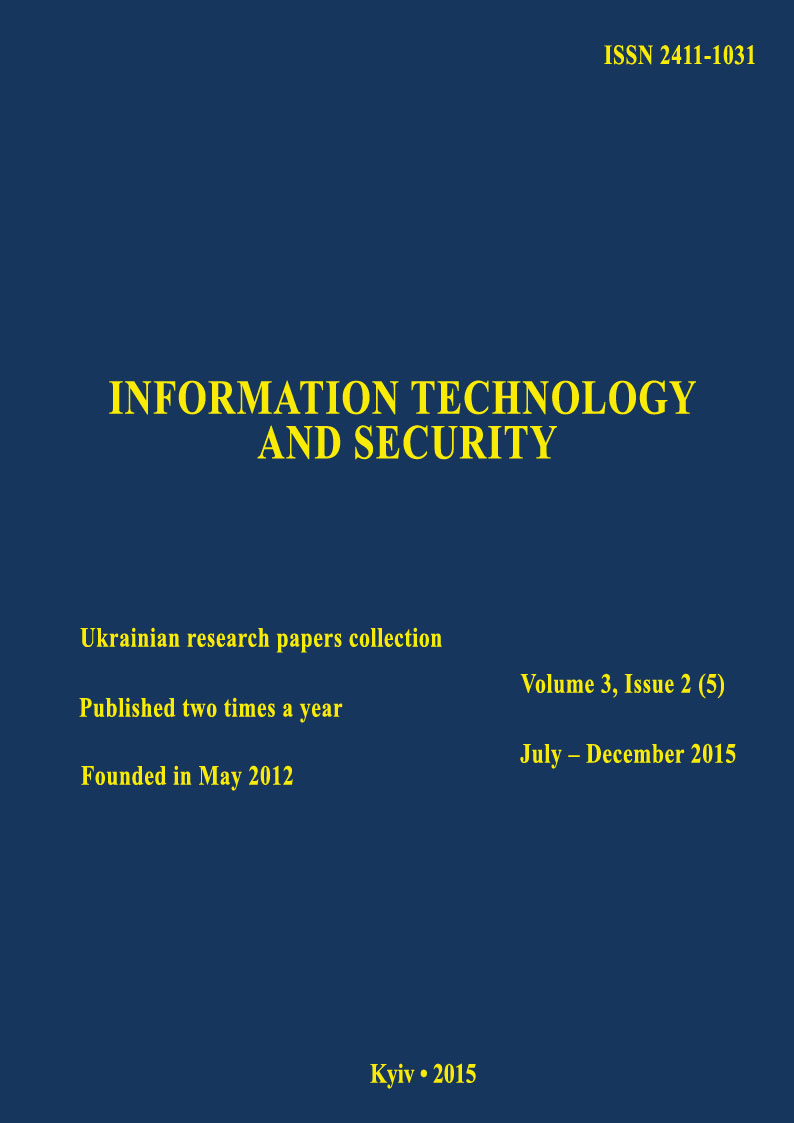Method for quality evaluation of trit pseudorandom sequence to cryptographic applications
DOI:
https://doi.org/10.20535/2411-1031.2015.3.2.60891Abstract
Developments in quantum cryptography are carried by almost all major western telecommunication companies and research centers. Rapid development led to a significant expansion of the protocols range. From viewpoint of information capacity the most effective protocols for quantum cryptography system is trit systems. However, there is a problem of developing trit pseudorandom sequences generators and assessing their quality. This is because random and pseudo-random sequence generated by different generators for cryptographic applications must be tested by probabilistic and statistical methods. However, the vast majority of known techniques focused on testing generators pseudorandom binary sequences, so confirm pseudorandom generated trit sequences using them is almost impossible. Also there are not existed software and methods of such sequences assessment and arises the task of method developing for evaluation the quality of ternary pseudorandom sequences to evaluate the feasibility of using them for cryptographic applications. That method was developed in this paper and it is based on the approach used in NIST STS.
Keywords: quantum cryptography, trit, qutrit, pseudorandom sequence, pseudorandom sequences generator, quality assessment.
References
Korchenko, O., Vasiliu, E., Gnatyuk, S. (2010), Modern quantum technologies of information security, Aviation. Vilnius: Technika, Vol. 14, No. 2, pp. 58-69.
Nilsen, M., Chang, I. (2006), Kvantovye vychisleniia i kvantovaia informatciia [Quantum computing and quantum information], Mir Publ., Moskow, 824 p.
Kinzeryavyy, V., Vasiliu, E., Gnatuyk, S., Zhmurko, T. (2012), Novyi metod pidsylennia sekretnosti pinh-ponh protokolu z paramy pereplutanykh kutrytiv [The new method of ping-pong protocol secrecy amplification with pairs of entangled qutrits], Ukrainian scientific journal of information security, №2 (55), pp. 5-13.
Gnatyuk, S., Zhmurko, T., Falat, P. (2015), Efficiency Increasing Metod for Quantum Secure Direct Communication Protocols, The 8th IEEE International Conference on Intelligent Data Acquisition and Advanced Computing Systems: Technology and Applications, Warsaw, Poland, pр. 125-130.
Gnatyuk, S., Zhmurko, T., Kinzeryavyy, V., Seilova, N. (2015), Metod heneruvannia trytovykh psevdovypadkovykh poslidovnostei dlia system kvantovoi kryptohrafii [Method of pseudorandom trit sequences generating for quantum cryptography systems], Ukrainian Scientific Journal of Information Security, Vol. 22, Iss. 2, pp. 140-147.
NIST STS, available at : http://csrc.nist.gov/groups/ST/toolkit/rng/documentation_ software.html (accessed : 26 September 2015).
Knuth, D. (1977), Iskusstvo programmirovaniia dlia EVM Poluchislennye algoritmy [The Art of Computer Programming. Seminumerical Algorithms. Vol. 2] Mir Publ., Moskow, 700 p.
Marsaglia G. DIEHARD StatisticalTests, available at : http://stat.fsu.edu/~geo/ diehard.html (accessed : 06 Oktober 2015).
Downloads
Published
How to Cite
Issue
Section
License
Copyright (c) 2020 Collection "Information technology and security"

This work is licensed under a Creative Commons Attribution 4.0 International License.
The authors that are published in this collection, agree to the following terms:
- The authors reserve the right to authorship of their work and pass the collection right of first publication this work is licensed under the Creative Commons Attribution License, which allows others to freely distribute the published work with the obligatory reference to the authors of the original work and the first publication of the work in this collection.
- The authors have the right to conclude an agreement on exclusive distribution of the work in the form in which it was published this anthology (for example, to place the work in a digital repository institution or to publish in the structure of the monograph), provided that references to the first publication of the work in this collection.
- Policy of the journal allows and encourages the placement of authors on the Internet (for example, in storage facilities or on personal web sites) the manuscript of the work, prior to the submission of the manuscript to the editor, and during its editorial processing, as it contributes to productive scientific discussion and positive effect on the efficiency and dynamics of citations of published work (see The Effect of Open Access).

